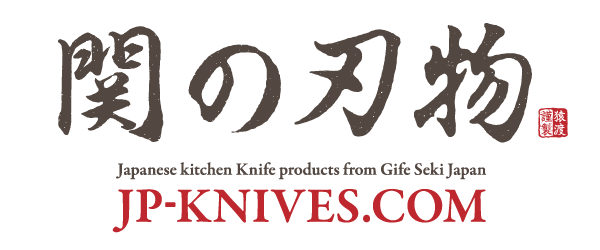Carbon Steel vs Stainless Steel
Japanese swords and kitchen knives were traditionally made of carbon steel. Carbon steel is simply steel which contains a small percentage of carbon. Many centuries ago, Japanese blacksmiths developed methods of incorporating carbon into pure steel to increase its hardness. The finished blades could then be sharpened to an extremely fine edge.
However, carbon steel can rust easily. Therefore, its high cutting performance is offset by a need for careful maintenance. Although top chefs still appreciate Japanese carbon steel knives, stainless steel has become the most common material for kitchen knives today.
Top Grades of Japanese Stainless Steel
Stainless steel refers to a whole range of modern steel alloys. All of them contain over 10.5% chromium, which makes the steel very resistant to rust. Japanese steel manufacturers make a range of stainless steel variants which are excellent for kitchen knives. When browsing our products, look out for the following materials.VG-10
VG-10 is a high-quality Japanese stainless steel, engineered specifically for use in cutlery by Takefu Special Steel Co. Ltd. Besides chromium, it contains cobalt, carbon, molybdenum, manganese and vanadium. Many top-end Japanese manufacturers use VG-10 in their best knives.
10A
10A or AUS-10 is a high-grade stainless steel manufactured by Aichi Steel Corporation. Like VG-10, 10A contains vanadium, which gives extra hardness and edge retention. Overall, these two varieties of stainless steel offer very similar characteristics.
What is Damascus Steel?
Historically, true Damascus steel was only made in the city of Damascus. For centuries, the blades made there were prized for their beautiful water-like patterning as much as for their sharpness. The Damascus production method, understandably, was a closely guarded trade secret. Special blade-folding techniques and unique impurities in the steel both contributed to its success. In the end, however, the secret was kept too well. Since the Damascus blade-making industry died out in the 18th century, nobody has managed to recreate it accurately on a commercial scale.Today, 'Damascus steel' chef's knives contain different grades of steel folded together repeatedly, sometimes around a core of pure knife-grade steel. The aim is to imitate the technique and appearance of historical Damascus steel, if not its exact composition.
A properly made Japanese Damascus chef’s knife will always exhibit great durability and sharpness. However, the main attraction is the distinctive patterning created by the layers of metal.

Always read the product description. Some lower quality Damascus steel imitations are merely etched!
Damascus Steel vs Stainless Steel Chef's Knives: A Question of Taste?
The choice between Damascus steel and ordinary stainless steel is not necessarily as crucial as that between stainless steel and traditional carbon steel. In fact, your next Japanese chef’s knife may combine a beautiful Damascus pattern with all the resistant qualities of stainless steel. Many manufacturers in Seki City are now crafting Damascus blades using the best VG-10 or 10A steel.Many of our stainless Damascus steel knives are layered more than 30 times, creating some exquisite designs. Take this Seki Kanetsugu chef's knife, for example.

Some, like this Kanetsune utility knife, combine Damascus patterning with a hammered ‘tsuchime’ finish. The indentations help wet ingredients to separate more easily from the blade when sliced.

Conclusion
We believe there is little point in debating Damascus steel vs stainless steel chef's knives in terms of performance. All other things being equal, it would be difficult to separate a good patterned knife from a good non-patterned one. In truth, it is mostly a matter of aesthetic preference.The real choice to be made is between stainless and carbon steel. Carbon steel knives can be sharper than even the best stainless steel ones but need considerably more maintenance.
You may already have your heart set on the beautiful, wavy pattern of a Damascus blade. In this case, our advice is to choose the one you like the best. Then, of course, check whether it is stainless or carbon! Thanks to the exacting standards of our Japanese craftsmen, a Seki City knife will perform excellently regardless of looks.
Which is your favourite Japanese Damascus steel knife? Browse our full range to find out!
